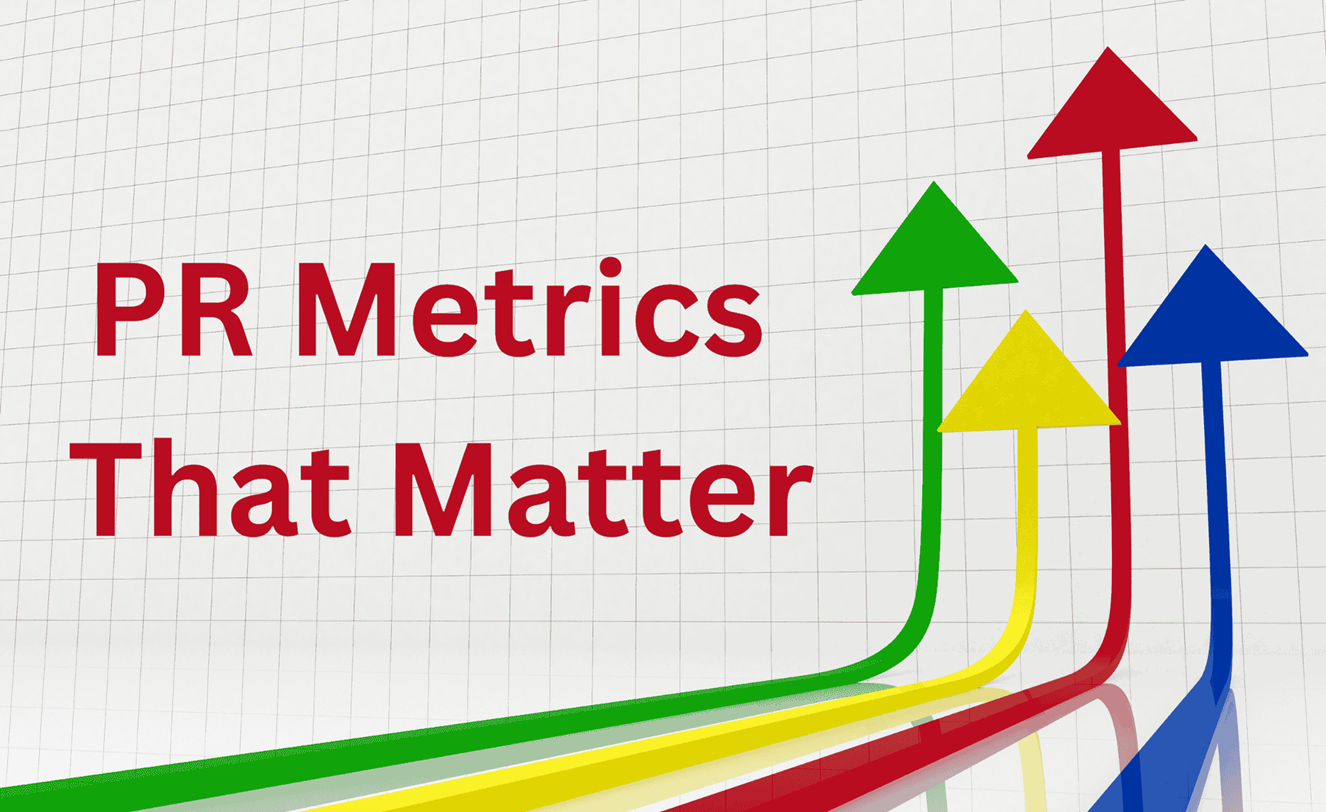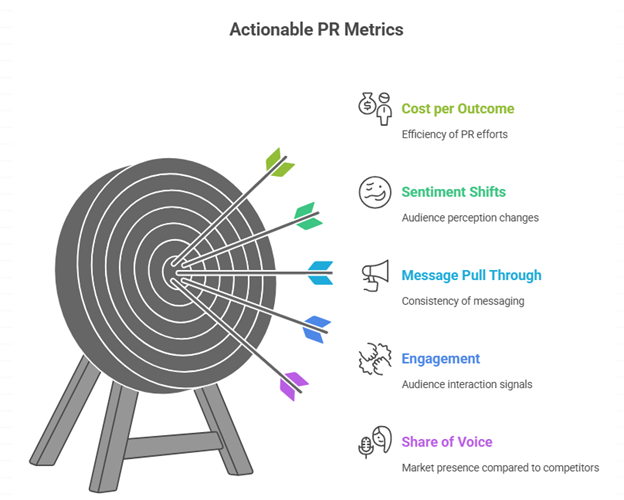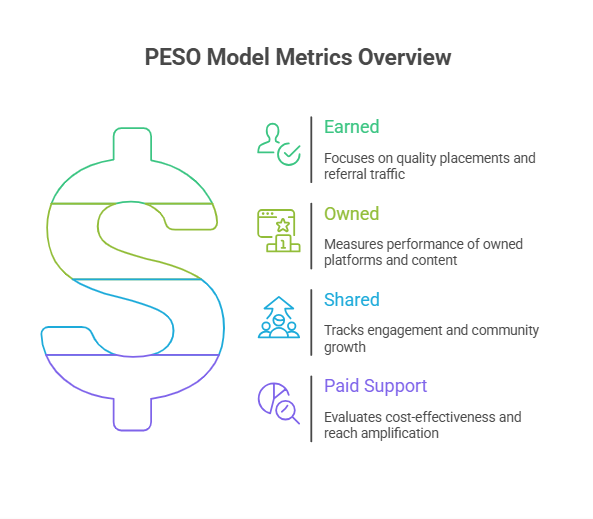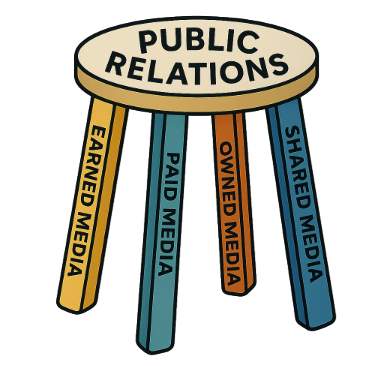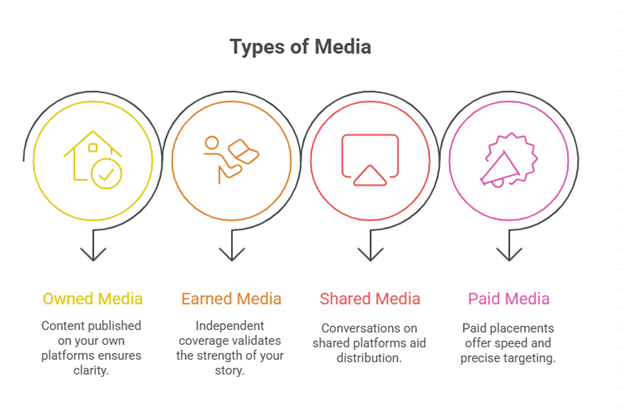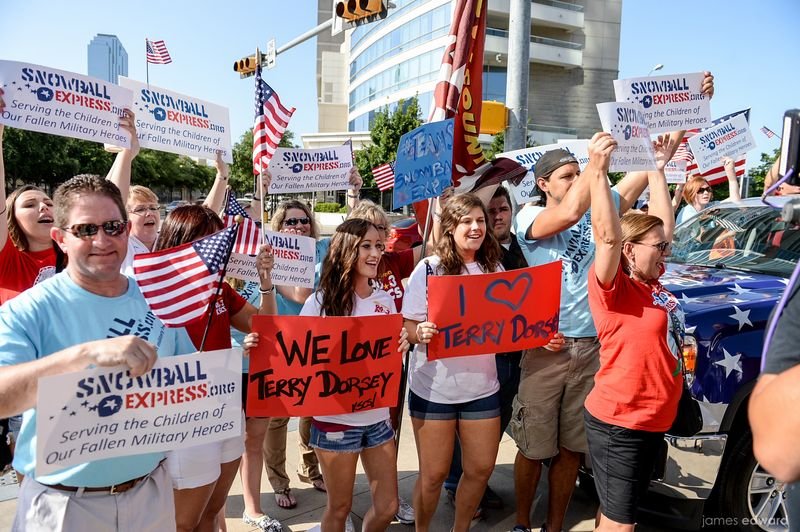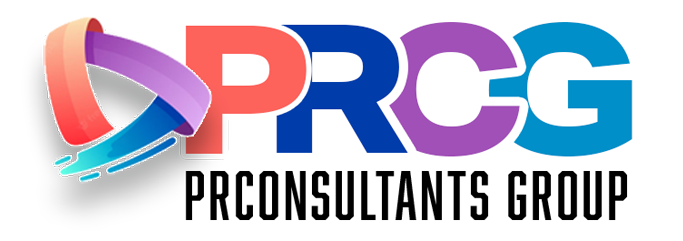Last quarter I sat with a CEO who proudly told me their team earned 35 million impressions on a product launch. Big number. I asked a simple follow up. What did those impressions do for the business? Silence.
That is the trap with vanity. Numbers that look impressive on a slide can disconnect from outcomes. In public relations, where numbers can be dazzling and deceptive, it is easy to get lost in the sparkle. Strong leaders do not.
What are vanity PR metrics?
Vanity metrics are the stats that look good without proving success. Impressions. Raw follower counts. Likes. These inflate visibility but rarely show if anyone cared, trusted or acted.
They are not meaningless, but they are not enough. You would not judge your sales team only on doors knocked. You would ask how many opened, how many conversations happened and how many deals closed. PR deserves the same rigor.
Case in point. Your team lands a story on Forbes.com. Cision lists Forbes with an audience of 16,273,661. That is a platform number, not your readership. Treating 16,273,661 as reads is misleading, yet many reports still drop that number into reach. Big numbers can start a conversation. Actionable numbers close it.
What are actionable PR metrics?
Actionable PR metrics show whether communications move people toward a decision that matters to the business. A few to anchor your dashboard:
Share of voice vs named competitors
Quality and relevance of backlinks from earned coverage
Referral traffic from specific placements
Engagement that signals intent, such as saves, comments, shares, replies
Conversions tied to PR touchpoints, such as demo requests, email signups, store visits
Growth in branded and category search
Presence in AI search results for priority queries
Message pull through in coverage and interviews
Sentiment shifts among priority audiences
Cost per outcome, such as cost per qualified media mention or cost per referral lead
These are the numbers that help a CMO decide where to place the next dollar. They help a CEO see how communications contribute to revenue and reputation.
Map PR metrics to the customer journey
PR works across the full funnel. Your metrics should too.
Awareness
Share of voice, unique reach of earned coverage, category search lift, branded search lift, new users from referral traffic
Consideration
Time on PR landing pages, return visits from placements, content downloads, email growth from PR content, analyst briefing requests
Decision
Sales-qualified leads with PR as first or assist touch, coupon redemptions tied to PR codes, foot traffic tied to local coverage, store locator starts
Loyalty and advocacy
Repeat purchase tied to customers sourced from PR, reviews volume and rating after PR bursts, UGC volume, owned community growth
This is how PR Metrics stop being a scoreboard and start being a steering wheel.
Tie metrics to the PESO model
Your plan likely blends paid, earned, shared and owned. Measure each channel on what it does best, then show how the pieces reinforce each other.
Earned
Placement quality, domain authority of outlets, backlink quality, message pull through, referral traffic, conversions from earned pages
Owned
PR hub performance, newsroom traffic, average time on page, scroll depth, conversions from bylines and explainers
Shared
Saves, shares, comments, click-through to owned content, community growth tied to PR moments
Paid support
Cost to amplify earned hits, incremental reach on target, lift in branded search when you boost coverage, assisted conversions
When you connect the dots across a fully integrated program, executives see how communications compounds.
Why the difference matters in the boardroom
Quick story from my desk. A franchise brand was spending heavily on influencers. The vanity report sparkled. Big reach. Pretty content. Many likes. We traced referral traffic and coupon redemptions. Almost no conversion. We shifted to fewer creators with buyer overlap and tighter briefs. Reach dropped by half. Sales inquiries quadrupled.
Boards do not need to see every click. They need clarity. Is PR driving outcomes that matter to this business? Actionable PR Metrics earn their place in that answer.
Why asking for tactics first misses the point
Too many new business calls start the same way. A brand leads with tactics. We want a press release. We want The New York Times. A press release and one media hit rarely make a significant impact.
When selecting a PR agency, start with your business goals, not a wish list of outlets. Lead with a real outcome. We need to grow holiday sales 15 percent year over year. Can you help? Now you will get strategy. That is why you hire a firm.
Think of it this way. You would not tell a cardiologist how to perform heart surgery. You would not instruct an attorney on contract law. You hire experts because they know how to solve the problem.
And when the CEO and board review the sales impact and PR is not present, the shiny headline loses its appeal.
Build a PR metrics framework you can defend
Here is a simple framework we use with executives who want confidence, not clutter.
Start with one business objective
State it in plain language with a number and a deadline. Example: Increase qualified pipeline from healthcare prospects by 20 percent this quarter.
Then we define two or three PR outcomes that influence that objective
Examples: Double meetings with healthcare trade media. Secure three analyst briefings that cite our product category. Earn ten backlinks from healthcare domains with domain authority over 60.
We pick a short set of leading and lagging indicators
Leading: analyst inquiries, inbound media requests, PR-driven traffic to healthcare landing pages
Lagging: demo requests from healthcare domains, proposal volume, closed-won with PR as first or assist touchWe instrument the journey
Use UTM links, dedicated landing pages, unique discount or RSVP codes, call tracking, QR codes at events, click-to-call in local listings. Remove guesswork.
Then we set thresholds for action
Decide what triggers a change. If the message pull-through drops below 60 percent, revise the brief. If referral traffic from earned is below 10 percent of total traffic, revisit the outlet mix.
We report with context
Replace wall-of-numbers reports with a one-page narrative. What we tried. What happened. What we are changing. One chart per stage is plenty.
Finally, we close the loop with sales and service
Confirm that PR-sourced leads progress faster or close at higher rates. Capture feedback on objections PR can address with content or executive visibility.
That is a framework a board can respect.
Practical examples of replacing vanity with value
A few common swaps you can make this quarter.
Instead of total impressions
Track unique reach to priority audiences and the percent of coverage with message pull-throughInstead of follower counts
Track saves, replies and shares on posts tied to PR stories, plus click-through to owned contentInstead of raw clip counts
Track outlet quality, domain authority, backlink presence and referral traffic from those clipsInstead of made-up AEV (advertising value equivalency)
Track cost to replicate outcomes with paid media, plus cost per qualified outcome, such as cost per referral leadInstead of a single viral moment
Track compounding effects such as search lift, brand mentions and secondary pickups two to four weeks after the hit
The role of AI and PR metrics
Executives ask about AI search. It belongs in your PR Metrics mix. Treat it like a new channel of discovery.
Track presence in AI overviews for your priority queries
Log cited sources when your brand appears
Expand your media plan to include credible sources AI often cites in your niche
Compare shifts in branded search and direct traffic after AI mentions
Watch your owned content quality. Clear headlines, strong subheads, schema, expert bios, citations
AI does not replace PR. It rewards credible coverage and clear content.
Avoid the most common measurement mistakes
A short list we often see.
Counting potential audience as readership
Platform audience is not people who read your story.
Cherry picking only the good clips
Executives want the full picture. Include neutral or negative coverage with a plan to address it.
Treating AEV as a monetary north star
AEV is a flawed metric and ignores quality, message pull-through and behavior. Please retire this metric.
Reporting everything, learning nothing
Ten pages of charts do not equal insight. Pick a few numbers that will change what you do next month.
Never connecting to sales
If your CRM does not see PR, your board will not either. Build UTM discipline with sales and marketing ops.
Skipping baselines
Start every program with a baseline for share of voice, search, sentiment and referral traffic.
A five-part PR metrics dashboard that executives will read
Keep it to one page. No fluff.
Objective
One sentence with a number and a date
What we did
Three bullet points on actions that matter
What happened
Five to seven metrics split across awareness, consideration, decision, loyalty
What we learned
Two or three short insights tied to outcomes
What we are changing
One to three concrete changes for the next cycle
That is how PR Metrics earn trust. Not through volume, but through clarity and decisions.
What to ask your PR team
If you are reviewing reports this month, try these questions.
Which of these metrics tie directly to our business goals
Can you show me the pathway from this media placement to engagement or sales
What did we learn this quarter that changes how we approach the next one
How are we instrumenting PR, so attribution is not guesswork
What will you stop doing based on these results
If the answers circle back to look at how big the number is, you are in vanity land.
A short buyer’s guide to PR measurement
Choosing a new firm or evaluating the one you have
Ask for a sample dashboard that hides the client’s name but shows structure and clarity.
Request one case where the team cut a tactic based on data and what happened next.
Confirm the tool stack and how they combine data across tools to avoid double-counting.
Ask how they measure message pull-through and sentiment?
Push on sales alignment. How will they get PR data into your CRM or analytics?
Ask for definitions up front. What do they mean by reach, reads, engagement and conversion?
You will learn more from how a firm measures than from any reel of highlights.
So, what does this mean
PR is not about inflating numbers. It is about influence, credibility and outcomes. Impressions have their place, but executives should press for metrics that inform decisions and drive growth. Otherwise, you end up buying bigger fireworks with no light after they fade.
Trade vanity for value
At TrizCom PR, we cut through the fluff. Our reporting is not designed to pad a deck. It is built to answer the question every executive asks. What did this campaign do for the business? If you are tired of vanity and want clarity, accountability and outcomes you can take to the boardroom, let's talk.

